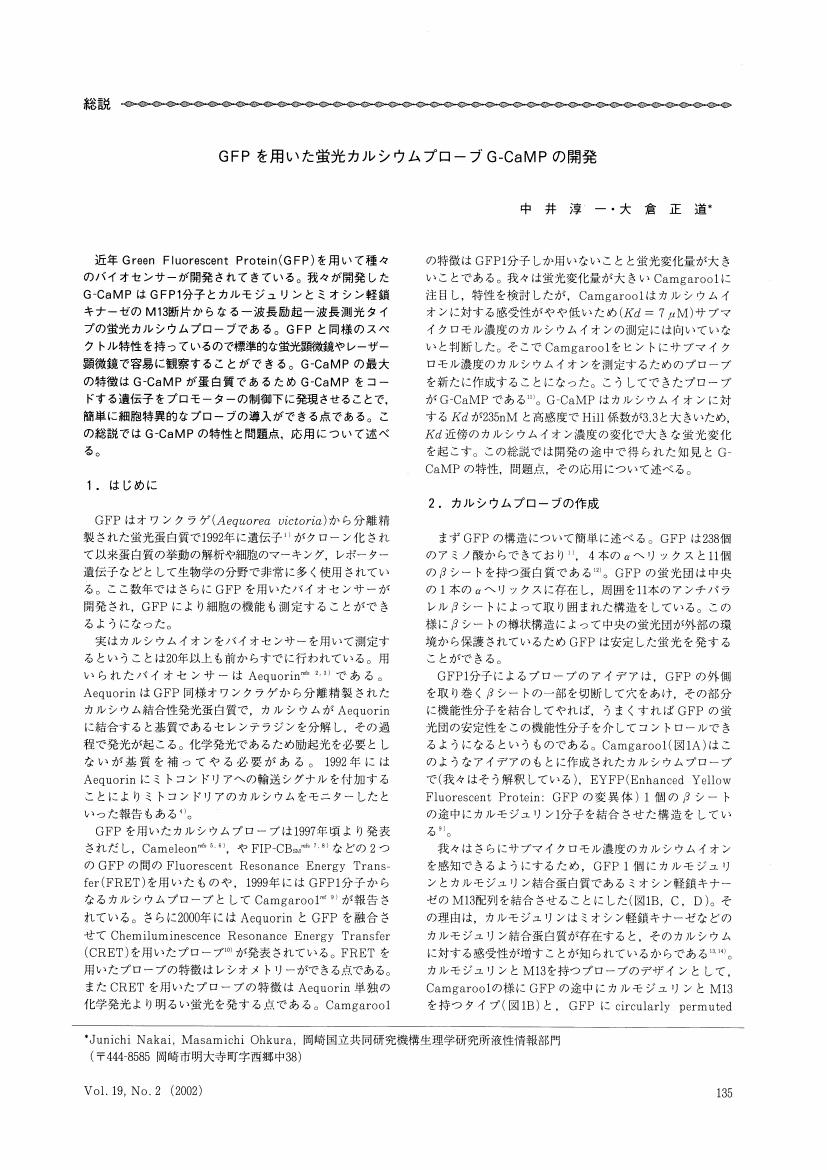1 0 0 0 OA GFPを用いた蛍光カルシウムプローブG-CaMPの開発
- 著者
- 中井 淳一 大倉 正道
- 出版者
- 日本比較生理生化学会
- 雑誌
- 比較生理生化学 (ISSN:09163786)
- 巻号頁・発行日
- vol.19, no.2, pp.135-145, 2002-08-31 (Released:2011-03-14)
- 参考文献数
- 28
1 0 0 0 OA 隠れマルコフモデルによるMATLAB/Simulinkモデルのクローン検出
- 著者
- 中井 淳一
- 出版者
- 人工知能学会
- 雑誌
- 人工知能学会全国大会論文集 (ISSN:13479881)
- 巻号頁・発行日
- vol.31, 2017
モデルベース開発が普及し,ソフトウェア開発としてMATLAB/Simulinkモデルを作ることも多いが,クローンと呼ばれる類似処理が増加すると,従来のソフトウェア開発と同様に保守が困難になる.そこに不具合があると,それと対応する全クローンに同様の修正を行う必要があり,作業量が増大し,修正漏れなどの弊害を生む.そこで,隠れマルコフモデルと遺伝的アルゴリズムを用い,モデルのクローンの検出を可能とする.
1 0 0 0 OA 手戻りを考慮したMATLAB/Simulinkモデルのためのクラスタリング手法
- 著者
- 中井 淳一 筑紫 晴久
- 出版者
- 一般社団法人 人工知能学会
- 雑誌
- 人工知能学会論文誌 (ISSN:13460714)
- 巻号頁・発行日
- vol.30, no.6, pp.791-801, 2015-11-01 (Released:2016-04-06)
- 参考文献数
- 32
The structure of the control software is often complicated. The reason is that it's created by multiple developers and added the functions later. Thus, many software developers want technology to reconstruct decomposing the structure of the software. However, current situation, the grouping of the control software is dependent on the experience and the sense of the skilled person. In addition, the opportunity of the review is very small, generic clustering algorithm has not yet been established. Existing clustering algorithm is not considered to apply to the control software. The problem is the inter-group feedback increase and group size not adjustable. This is because, when inter-group feedback is large, it is difficult to understand the control software, rework increases when division of labor. Also, when there is feedback between the pre-process and the next process at the black box testing, the calculation result of the next step also affects the pre-process, the test process is increased considerably. In this study, we tried the application of the clustering algorithm of graph theory to structure organize the control software. Using a genetic algorithm, and by forming groups based on modularity, while groups of closely related ones, and aid the formation of a grouping less inter-group feedback. Furthermore, it is easy to understand, and for ease of testing, adjustment of the number of groups to a size suitable for control software also aims to be a possibility.
1 0 0 0 ゼブラフィッシュの覚醒・睡眠の分子機構に関する研究
- 著者
- 中井 淳一
- 出版者
- 埼玉大学
- 雑誌
- 新学術領域研究(研究領域提案型)
- 巻号頁・発行日
- 2009
多くの動物は眠るが、睡眠の分子メカニズムはまだ良くわかっていない。この状況は、Hypocretin/Orexin(Hcrt)とその受容体が発見され大きく進展した。本研究は、ゼブラフィッシュを用いて動物の睡眠と覚醒の分子機構を明らかにすることを目的としている。そこで蛍光カルシウムプローブG-CaMPを神経細胞に発現させ神経細胞の機能とゼブラフィッシュの行動との関係を探ることを計画した。本研究において蛍光カルシウムプローブG-CaMP2を改良したG-CaMP-HSを新たに開発した。G-CaMP-HSはG-CaMP2と比較して高感度であるとともに、細胞内でのタンパク質の安定性が増しており、安静時の蛍光強度が高いという特徴を持つ。これに関連して、蛍光カルシウムプローブの性能向上に関する特許を申請した。次にG-CaMP-HSをGal4-UASの下流につないだコンストラクトを作成し、ゼブラフィッシュに導入することにより遺伝子改変ゼブラフィッシュを作成した。このゼブラフィッシュと運動ニューロン(Caudal primary neuron : CaPニューロン)にGal4を発現するゼブラフィッシュ(SAIGFF213A)とを掛け合わせることによりCaPニューロンにG-CaMP-HSを発現するゼブラフィッシュを作成した。CaPニューロンの活動をイメージングにより解析したところ、CaPニューロンのバースト発火に伴い、G-CaMP-HSの蛍光強度が変化することが観察された。この成果はProc Natl Acad Sci USAに報告した。ゼブラフィッシュの神経細胞からG-CaMP-HSを用いて神経活動をイメージングにて解析することが可能となったことにより、今後HcrtニューロンにG-CaMP-HSを発現させ解析することにより睡眠覚醒のメカニズムの解明が進むと考えられる。
